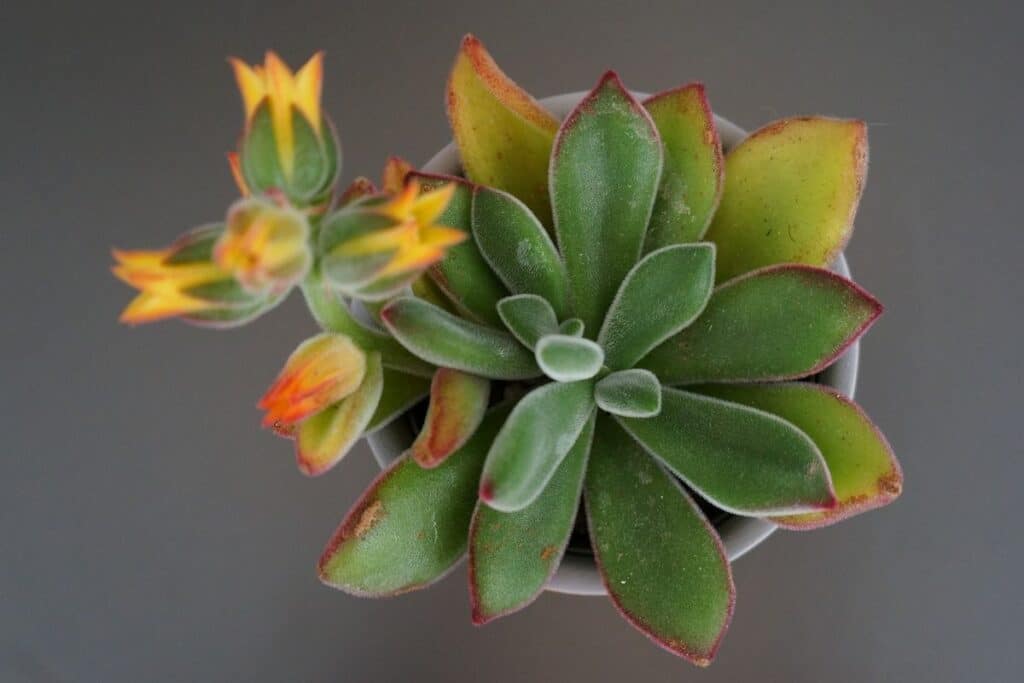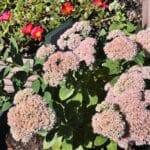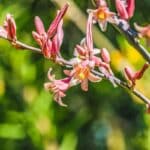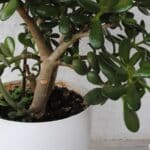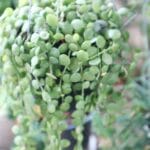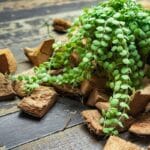What is a Chenille Plant?
Echeveria pulvinata or Chenille plant is a charming succulent from Oaxaca, Mexico. The name Echeveria is given to the plant in honor of the botanical illustrator Atanasio Echeverría y Godoy, while the species name ‘pulvinata’ means cushion-like, referring to the dense silvery-white hairs that cover its leaves and stems.
This characteristic fuzzy appearance gave it the common names, chenille plant, plush plant, and, of course, fuzzy plants.
Echeveria pulvinata plant is a member of the family Crassulaceae. It is a small plant, about 12 inches tall, with shrubby growth. The plant makes up for its small stature with its widespread habit. It forms sprawling branches topped with rosettes of fuzzy and fleshy, green leaves. The succulent leaves are oblong in shape with pointed tips.

Come winter, chenille plants will showcase their sunset-colored blooms. The bright orange and yellow flowers are bell-shaped and last until spring.
How to Care for Echeveria Pulvinata

Caring for Echeveria pulvinata succulents is relatively easy. Their needs are the same as any other succulent types.
Here are some caring tips for these charming plants.
How Much Light Does Chenille Plants Need?
As one of many echeveria types, chenille plants can tolerate partial shade to full sun. In their natural habitat, these plants are subjected to full sunlight all year round which made them love bright light conditions. Make sure to place your plants in areas where they can receive lots of sunlight but shielded from the harsh afternoon sun.
How Often Should You Water Chenille Plants?
Chenille plants are not fond of overwatering. They are prone to root rot from the excess moisture. The best way to avoid overwatering your plant is through the soak and dry method. This is done by watering the plant only when the soil is dry to the touch.
Do not worry if you miss a few days of watering because they can easily bounce back from a brief period of drought. Keep this regimen throughout spring and summer. During winter, reduce watering to monthly.
When watering your chenille plant, make sure to avoid overhead watering or watering above the leaves. The fuzzy leaves of these plants can retain the water which can cause the leaves to rot.
What is the Optimum Temperature and Humidity for Chenille Plants?
Although Echeveria pulvinata plants can survive high temperatures (their fuzzy leaves help prevent water loss), they prefer average temperatures with low to average humidity. The best growth is achieved at 65 °F to 70 °F (18 °C to 21 °C). Keep in mind that these plants are not very frost hardy, so it is best to keep them indoors during the winter months.
What is the Best Potting/Growing Media for Chenille Plants?
Echeveria pulvinata ruby is best planted in a slightly acidic (pH 6.0), porous, and well-drained soil to avoid overwatering. A commercial cactus and succulent mix will do, but if you prefer to make your own potting mix, you can combine a 2:1 potting soil and coarse sand, or 1:1:1 potting soil, perlite, and sand.
Do Chenille Plants Need Fertilizer?
Chenille plants can benefit from the occasional feeding, especially during the growing season (spring and summer). In early spring, feed your plants sparingly with a balanced fertilizer. Stop feeding completely when winter sets in.
When fertilizing your plant, make sure to strictly follow the instructions provided in the fertilizer packaging.
How to Propagate Chenille Plants
Echeveria pulvinata plants are easily propagated through stem cuttings. To do so, take a stem portion with an intact rosette from a mature, healthy plant. Let the stem cutting form a callous and then plant in a separate pot. Keep the soil dry for a few weeks and then water as you would a normal plant.
Common Issues with Chenille Plants
Let’s talk about the common issues you may encounter with your chenille plants. First of all, if you’ve brought your little fuzzy friend indoors to escape the freezing temperatures outside, you need to make sure it’s getting enough sunlight. These plants are cold hardy, but they still need some sun to thrive.
If you notice dead leaves or stems, it’s time to do some trimming. Don’t worry, you can propagate this little dude by taking stem cuttings and planting them in some well draining soil with good drainage holes.
Overwatering is another issue with the chenille plant. Echeveria pulvinata has tiny white hairs all over its leaves and stems that can trap moisture, so they’re especially susceptible to root rot. If you’re not sure if your plant needs water, just wait several days and see if the soil dries out a little.
One more thing – if you notice your chenille plant isn’t producing those gorgeous orange flowers anymore, it could be a sign of stress. Make sure it’s not too crowded in its pot and that it’s still getting enough light and water.
Should You Grow Echeveria Pulvinata – the Chenille Plant?
So, you’re thinking about growing the Echeveria Pulvinata, also known as the Chenille Plant? Well, let me tell you, this succulent is not for the faint of heart. It may have cute, little orange flowers and tiny white hairs on its stem, but don’t be fooled. This plant is a diva, as you now know from reading this article.
First off, it’s cold hardy, but only to a certain extent. If you live in an area with freezing temperatures for several days, you better bring this baby indoors or kiss it goodbye. And don’t even think about leaving it outside in the dead of winter – unless you want it to turn into a pile of dead leaves.
Speaking of indoors, this plant can be grown indoors, but it’s important to make sure it has a well draining soil and a drainage hole. The Chenille Plant likes to be free and not bogged down by soggy roots. So, make sure to show it some love and give it some space to breathe.
Now, if you’re up for a challenge, you can try propagating this diva by taking stem cuttings from the mother plant. But be warned, it’s not a guarantee and requires some patience and love.
So, should you grow the Echeveria Pulvinata – the Chenille Plant?
Well, if you’re up for a challenge and want to add a unique plant to your collection, then go for it. But just remember, it’s not for the faint of heart. And who knows, maybe one day you’ll be clicking your ruby slippers together, happy with your flourishing Chenille Plant.

